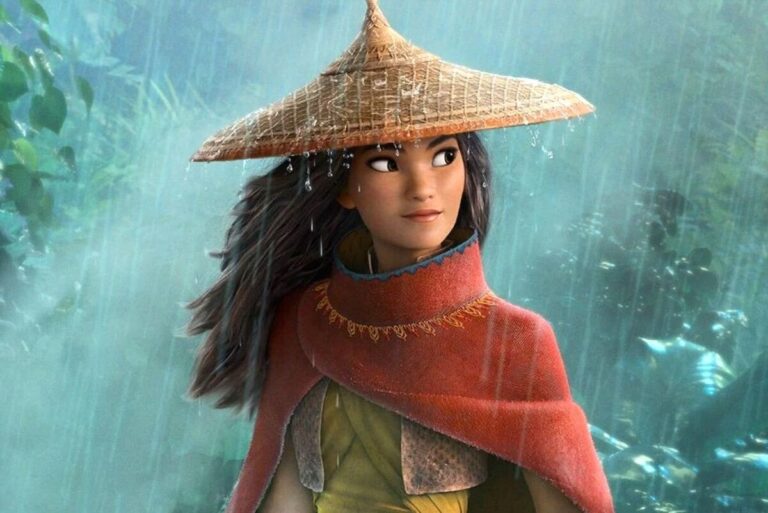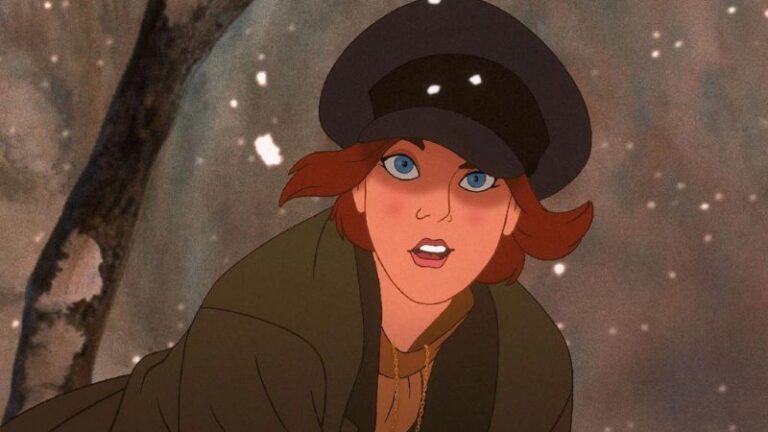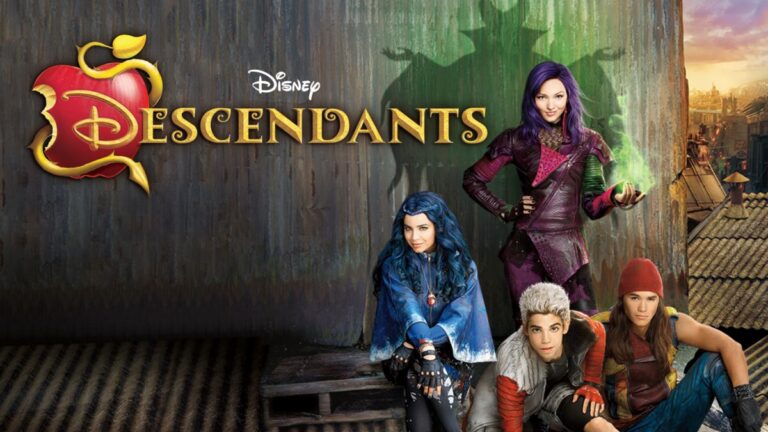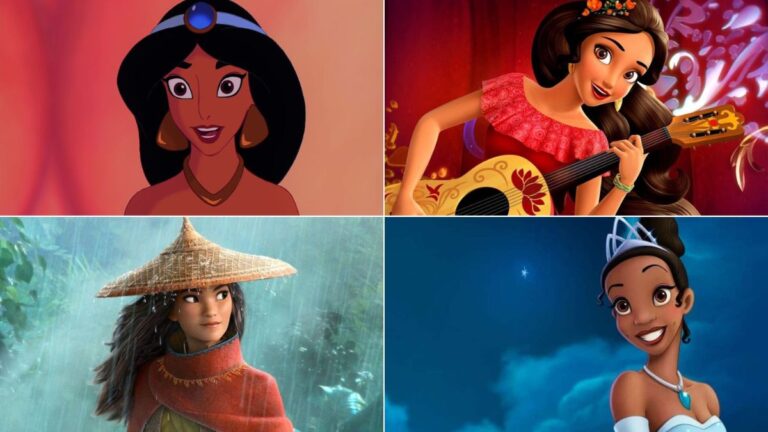How Old Are Disney Princesses? From Oldest To The Youngest
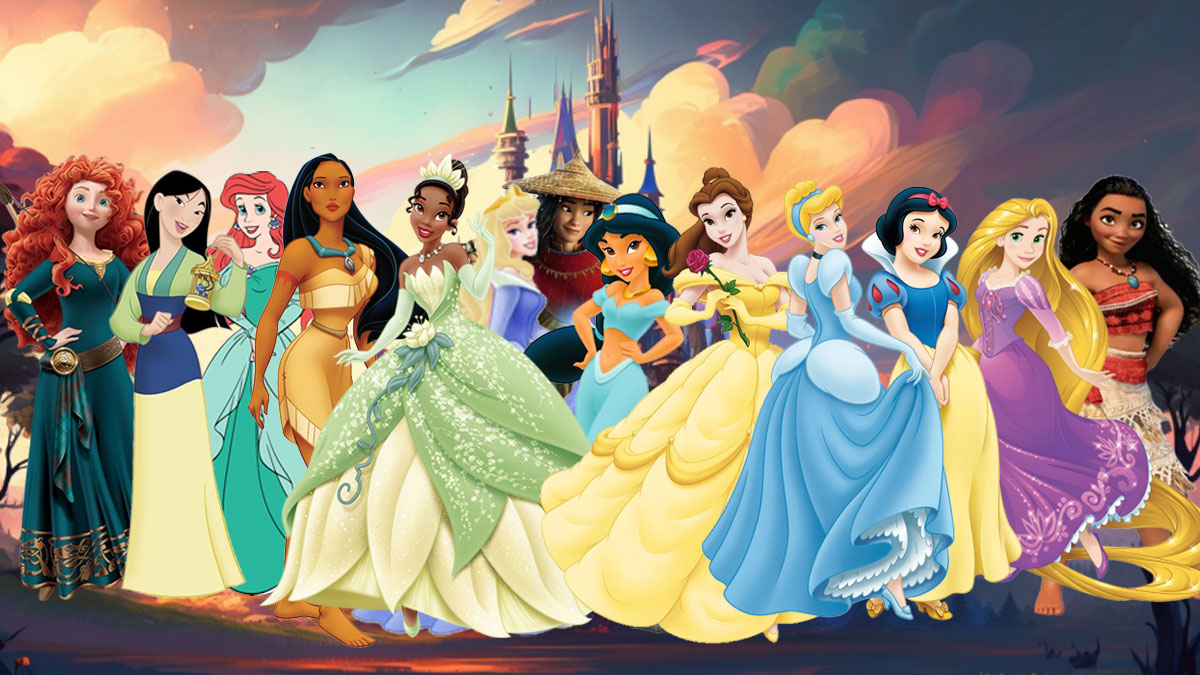
Since Walt Disney unveiled his first animated princess, Snow White, in 1937, the world has been captivated by the enchanting tales of these beloved characters. Each new Disney princess movie introduces audiences to heroines from various ages, backgrounds, and cultures. Yet, a question that often sparks curiosity among fans of all ages is how old these princesses are. In this article, we will explore the ages of these iconic characters, delving into their stories from the oldest to the youngest.
Disney princesses have been role models for generations, teaching valuable lessons about courage, love, and self-discovery. As we unravel the timeline of these captivating characters, we will gain insight into their fictional lives and appreciate the rich history of Disney animation. So, let’s embark on a magical journey through time and rediscover the ages of our favorite Disney princesses as we celebrate their enduring legacies and unique stories that continue to charm and inspire.
We have also made an article about how old Disney Princes are, so if you are interested, check it out.
| Princess | Movie | Age | Era |
|---|---|---|---|
| Snow White | Snow White and the Seven Dwarfs | 14 | Golden Age |
| Cinderella | Cinderella | 19 | Golden Age |
| Aurora | Sleeping Beauty | 16 | Golden Age |
| Ariel | The Little Mermaid | 16 | Disney Renaissance |
| Belle | Beauty and the Beast | 17 | Disney Renaissance |
| Jasmine | Aladdin | 15 | Disney Renaissance |
| Pocahontas | Pocahontas | 18 | Disney Renaissance |
| Mulan | Mulan | 16 | Modern Era |
| Tiana | The Princess and the Frog | 19 | Modern Era |
| Rapunzel | Tangled | 18 | Modern Era |
| Merida | Brave | 16 | Modern Era |
| Elsa* | Frozen | 21 | Age of Revival |
| Anna* | Frozen | 18 | Age of Revival |
| Moana | Moana | 16 | Age of Revival |
| Raya | Raya and the Last Dragon | 18 | Age of Revival |
The Golden Age Princesses: Snow White, Cinderella, and Aurora
The Golden Age of Disney Animation, from the 1930s to the 1950s, saw the birth of the first three Disney Princesses, who laid the foundation for the iconic lineup we know and love today. These characters are renowned for their grace, beauty, and kind-hearted nature, and they continue to captivate audiences with their timeless charm.
Snow White (Snow White and the Seven Dwarfs, 1937) – Age 14
Snow White is the original Disney Princess, making her debut in 1937 in the classic animated film “Snow White and the Seven Dwarfs.” As the youngest Disney Princess, Snow White is only 14 years old. Her age reflects her innocent and gentle demeanor as she befriends the seven dwarfs and relies on their support to overcome adversity.
Cinderella (Cinderella, 1950) – Age 19
Cinderella graced the silver screen in 1950, marking the beginning of Disney’s return to producing animated features after a brief hiatus during World War II. A symbol of resilience and kindness, 19-year-old Cinderella embodies the classic rags-to-riches story as she overcomes her wicked stepmother and stepsisters to find her true love.
Aurora (Sleeping Beauty, 1959) – Age 16
Aurora, also known as Sleeping Beauty, made her debut in 1959. At 16 years old, she is the third-youngest Disney Princess. Her story revolves around a curse placed upon her by the vengeful Maleficent, which causes her to fall into a deep slumber until true love’s kiss awakens her. Aurora’s tale emphasizes the power of love and the importance of staying true to oneself, even in the face of adversity.
The Disney Renaissance: Ariel, Belle, Jasmine, and Pocahontas
From the late 1980s to the late 1990s, the Disney Renaissance revitalized Disney’s animation department and introduced a new generation of strong, independent, and adventurous princesses. These characters broke away from traditional stereotypes and embarked on daring journeys of self-discovery and empowerment.
Ariel (The Little Mermaid, 1989) – Age 16
Ariel, the adventurous and curious mermaid, debuted in 1989’s “The Little Mermaid.” At 16 years old, she dreams of exploring the human world and defies her father’s wishes to pursue her true desires. Ariel’s story emphasizes the importance of following one’s heart and taking risks to achieve personal goals.
Belle (Beauty and the Beast, 1991) – Age 17
Belle, the intelligent and compassionate protagonist of “Beauty and the Beast” (1991), is 17 years old. A voracious reader who dreams of adventure, Belle’s bravery and kindness ultimately help her break the curse on the Beast and his enchanted castle. Her story teaches the value of looking beyond appearances and finding beauty within others.
Jasmine (Aladdin, 1992) – Age 15
Jasmine, Agrabah’s spirited and independent princess, appears in the 1992 film “Aladdin.” At 15 years old, she resists the constraints of her royal life and seeks to choose her path. Jasmine’s journey reflects the importance of personal agency and challenging societal expectations.
Pocahontas (Pocahontas, 1995) – Age 18
Pocahontas, the courageous and free-spirited daughter of Chief Powhatan, was introduced in the 1995 film of the same name. Aged 18, she bridges the gap between her Native American tribe and English settlers, promoting peace and understanding. Pocahontas’ story emphasizes the significance of harmony, unity, and respecting nature.
The Modern Era: Mulan, Tiana, Rapunzel, and Merida
The Modern Era of Disney Animation, from the late 1990s to the early 2010s, brought forth a group of Disney Princesses who showcased diverse backgrounds, exceptional determination, and unwavering courage. Each character embarked on extraordinary journeys, challenging traditional norms and redefining what it means to be a princess.
Mulan (Mulan, 1998) – Age 16
The fearless and resourceful warrior Mulan debuted in the 1998 film “Mulan.” At 16 years old, she disguises herself as a man to take her father’s place in the Chinese army, demonstrating immense courage and selflessness. Mulan’s story emphasizes the importance of honor, loyalty and challenging gender stereotypes.
Tiana (The Princess and the Frog, 2009) – Age 19
Tiana, the hardworking and ambitious protagonist of “The Princess and the Frog” (2009), is 19 years old. As a young woman determined to open her restaurant in New Orleans, Tiana’s story teaches the value of perseverance, hard work, and balancing personal dreams with the love and support of others.
Rapunzel (Tangled, 2010) – Age 18
Rapunzel, the spirited and artistic princess with magical, long hair, appears in the 2010 film “Tangled.” At 18 years old, she leaves her tower for the first time to explore the world and discover her true identity. Rapunzel’s journey highlights the significance of self-discovery, personal growth, and embracing one’s unique qualities.
Merida (Brave, 2012) – Age 16
Merida, the bold and independent Scottish princess, was introduced in the 2012 film “Brave.” Aged 16, she defies tradition and challenges her fate, ultimately learning the importance of communication and understanding between family members. Merida’s story promotes the power of forging one’s path while respecting the wisdom and values of previous generations.
The Age of Revival: Elsa, Anna, Moana, and Raya
The Age of Revival, starting from the early 2010s and continuing through the present day, has been marked by a resurgence of success in Disney’s animated features. This period introduced us to new princesses who are diverse, strong-willed, and deeply relatable as they navigate personal struggles, emotional growth, and self-acceptance.
Elsa (Frozen, 2013) – Age 21
Elsa, the elder sister of Anna and the Snow Queen of Arendelle, appears in the immensely successful 2013 film “Frozen.” At 21 years old, she struggles to control her magical ice powers and learns the importance of embracing her true self. Although not an official Disney Princess, Elsa’s journey of self-discovery and empowerment resonates with audiences worldwide.
Anna (Frozen, 2013) – Age 18
Anna, Elsa’s younger sister and the optimistic and daring Princess of Arendelle, is also introduced in “Frozen.” At 18 years old, Anna embarks on a perilous journey to save her kingdom and reconnect with her sister. Like Elsa, Anna is not an official Disney Princess, but her love, sacrifice, and resilience story have captured the hearts of millions.
Moana (Moana, 2016) – Age 16
Moana, the brave and adventurous daughter of a Polynesian chief, stars in the 2016 film “Moana.” At 16 years old, she sets sail on a daring voyage to save her people, discovering her identity and embracing her role as a leader. Moana’s journey highlights the importance of cultural heritage, environmental stewardship, and self-determination.
Raya (Raya and the Last Dragon, 2021) – Age 18
Raya, the skilled and resourceful warrior princess from Kumandra, debuted in the 2021 film “Raya and the Last Dragon.” At 18 years old, she embarks on a quest to find the legendary last dragon and restore harmony to her fractured world. Raya’s story teaches the value of trust, unity, and the power of working together to overcome seemingly insurmountable challenges.
Beyond Age: The Wisdom and Lessons Each Princess Imparts
While the ages of Disney Princesses provide a unique lens through which to understand their stories, it’s essential to recognize that the true magic of these characters lies in the wisdom and life lessons they impart. Each princess, regardless of her age, is a source of inspiration and offers valuable teachings that resonate with audiences of all generations.
- Embracing one’s true self: Characters like Elsa and Mulan demonstrate the importance of accepting and celebrating our unique identities, emphasizing that embracing our true selves leads to personal growth and happiness.
- Challenging societal norms: Princesses such as Belle, Jasmine, and Merida teach us to question traditional expectations and norms, encouraging personal agency and pursuing our dreams.
- The power of love and compassion: Princesses like Cinderella, Aurora, and Belle exemplify the transformative power of love and compassion, showing that kindness and understanding can break barriers and heal wounds.
- Perseverance and hard work: Tiana’s journey highlights the importance of dedication, hard work, and perseverance in achieving our goals, reminding us that success comes to those who stay true to their ambitions.
- Self-discovery and personal growth: The stories of Rapunzel and Moana emphasize the significance of embarking on personal journeys to discover our true selves, illustrating that growth often comes from stepping outside our comfort zones.
- Unity and collaboration: Princesses like Pocahontas and Raya demonstrate the power of bringing people together and working collaboratively to overcome challenges, showcasing the importance of trust, unity, and communication.
By transcending age and time, Disney Princesses continue inspiring and captivating audiences with their courage, love, and self-discovery stories. The wisdom and lessons they impart are a testament to their enduring appeal and the ability of these iconic characters to connect with fans across generations.
A Glimpse into the Creative Process: Deciding the Ages of Disney Princesses
The creative process behind determining the ages of Disney Princesses is multifaceted, encompassing factors such as storytelling, character development, and cultural context. Disney’s animators, writers, and directors must consider the target audience and the values they aim to convey through each princess’s journey.
By carefully choosing the age of a princess, they can create a relatable and compelling character that resonates with the audience, allowing viewers to connect with the princess on an emotional level and immerse themselves in her story.
In many instances, the age of a Disney Princess plays a critical role in her character arc and the themes she embodies. For example, a younger princess may showcase the innocence, naivety, and vulnerability often associated with adolescence, while an older princess might represent maturity, wisdom, and a sense of responsibility.
Additionally, the cultural context of each story must be taken into account, as the age of a princess can reflect societal norms and expectations during the period in which her tale unfolds.
The creative team must balance staying true to the source material, if the story is based on a classic fairy tale or legend, and adapting the character to appeal to contemporary audiences. Ultimately, the age of a Disney Princess is an essential aspect of her identity, shaping her narrative and the timeless lessons she imparts.
The Evolution of Disney Princesses: Reflecting the Changing World
As the world has evolved over the decades, so have Disney Princesses, adapting to their time’s shifting values, beliefs, and societal expectations. The transformation of these iconic characters offers a fascinating insight into how popular culture and social norms have changed and how Disney has responded to these changes by creating princesses who resonate with contemporary audiences.
The earliest Disney Princesses, such as Snow White, Cinderella, and Aurora, were portrayed as graceful, kind, and often passive figures who primarily relied on others to save them. This portrayal mirrored the traditional gender roles and societal expectations of women from the 1930s to the 1950s. However, as society challenged these norms, Disney Princesses started to embody more progressive values. Characters like Ariel, Belle, and Jasmine from the Disney Renaissance era exhibited a greater sense of independence, curiosity, and determination, breaking away from the more traditional mold of their predecessors.
In the Modern Era and the Age of Revival, Disney Princesses have continued to evolve, becoming even more diverse and multifaceted. Characters such as Mulan, Tiana, and Moana showcase exceptional strength, resilience, and resourcefulness, highlighting the importance of pursuing one’s dreams, challenging societal expectations, and embracing personal growth. Furthermore, Disney has expanded its cultural representation with princesses like Pocahontas, Raya, and Moana, bringing stories from various cultures and backgrounds to the forefront.
The evolution of Disney Princesses demonstrates the company’s ongoing commitment to adapting and reflecting the changing world. By creating princesses who embody contemporary values and challenge traditional stereotypes, Disney continues to captivate and inspire audiences, offering timeless lessons that resonate across generations.
Exploring the Cultural Context: How Age Influences Each Princess’s Story
The age of a Disney Princess shapes her character and personal journey and is also deeply intertwined with the cultural context in which her story unfolds. By considering the societal norms, expectations, and historical background of each princess’s tale, we can better understand the impact of age on the character’s development and the overall narrative.
In the case of the earlier princesses, like Snow White, Cinderella, and Aurora, their relatively young ages reflect the innocence and vulnerability often associated with traditional female roles during the periods in which their films were produced. These princesses typically rely on others, predominantly male figures, for rescue or support. Their ages reinforce the cultural expectations of women during the 1930s to 1950s, emphasizing their need for protection and guidance.
As societal norms shifted and challenged traditional gender roles, the Disney Princesses evolved to reflect these changes. Characters like Ariel, Belle, and Jasmine, who emerged during the Disney Renaissance, are slightly older and showcase greater independence, curiosity, and ambition. Their ages allow them to break away from more passive roles and assert their desires and aspirations, reflecting the growing empowerment of women in society during the late 20th century.
In more recent films, the ages of Disney Princesses such as Mulan, Moana, and Raya continue to play a significant role in their stories. These characters, who hail from diverse cultural backgrounds, exemplify resilience, resourcefulness, and personal growth. Their ages symbolize the transition from adolescence to adulthood, a critical period during which they confront societal expectations, discover their identities, and embrace their responsibilities as leaders or protectors of their communities.
Ultimately, the age of a Disney Princess is not just a number but a crucial element that shapes her character and story within the cultural context of her time. By considering this dimension, we gain a deeper appreciation for the timeless appeal of these iconic characters and the lessons they impart.
The Timeless Appeal: What Makes Disney Princesses Beloved Across Generations
Disney Princesses have captivated audiences for decades, with their stories transcending age and cultural boundaries. The timeless appeal of these iconic characters can be attributed to several factors that resonate with viewers of all generations, ensuring their enduring popularity and influence in popular culture.
- Relatable struggles and emotions: One of the primary reasons Disney Princesses remain beloved is their ability to portray genuine, relatable emotions and struggles. Despite her unique circumstances, each princess experiences universal feelings such as love, fear, hope, and determination, allowing audiences to connect with her story personally.
- Inspirational journeys: Disney Princesses often embark on transformative journeys, overcoming obstacles and learning valuable lessons. These narratives of growth and self-discovery inspire viewers to reflect on their own lives and aspirations, offering guidance and encouragement to pursue their dreams.
- Empowerment and resilience: Over the years, Disney Princesses have evolved to reflect changing societal values and expectations, with modern princesses exhibiting greater independence, resourcefulness, and strength. These characters empower viewers to challenge stereotypes, embrace their unique qualities, and overcome adversity, making them role models for all ages.
- The power of love and friendship: Disney Princesses’ stories often emphasize the importance of love, friendship, and compassion, showcasing the transformative power of these emotions in their lives. These themes resonate with viewers, highlighting the significance of forging meaningful connections with others and valuing the bonds that unite us.
- Rich cultural heritage: The diverse backgrounds and cultural contexts of Disney Princesses offer a window into different cultures, traditions, and histories. This diversity enriches the stories and characters, fostering appreciation, understanding, and respect for the unique aspects of each princess’s heritage.
- Memorable music and visuals: The enchanting soundtracks and stunning visuals accompanying Disney Princesses’ stories have played a significant role in their timeless appeal. Memorable songs and breathtaking animation create an immersive experience that captures the imagination and leaves a lasting impression on viewers.
The timeless appeal of Disney Princesses lies in their relatable struggles, inspiring journeys, empowering messages, and captivating storytelling. Combined with the rich cultural heritage and memorable music and visuals, these factors ensure that Disney Princesses will continue to enchant and inspire audiences for future generations.


